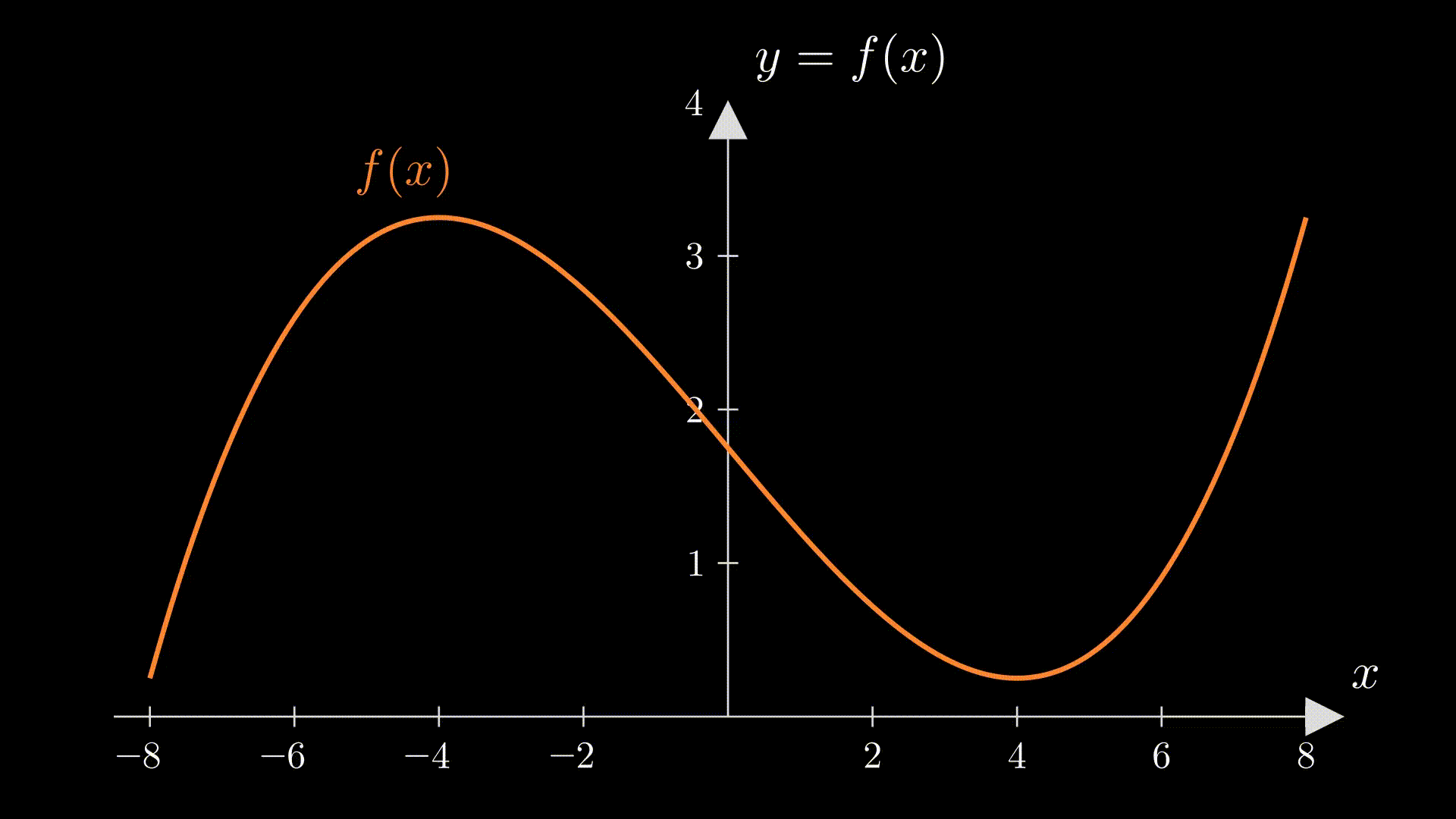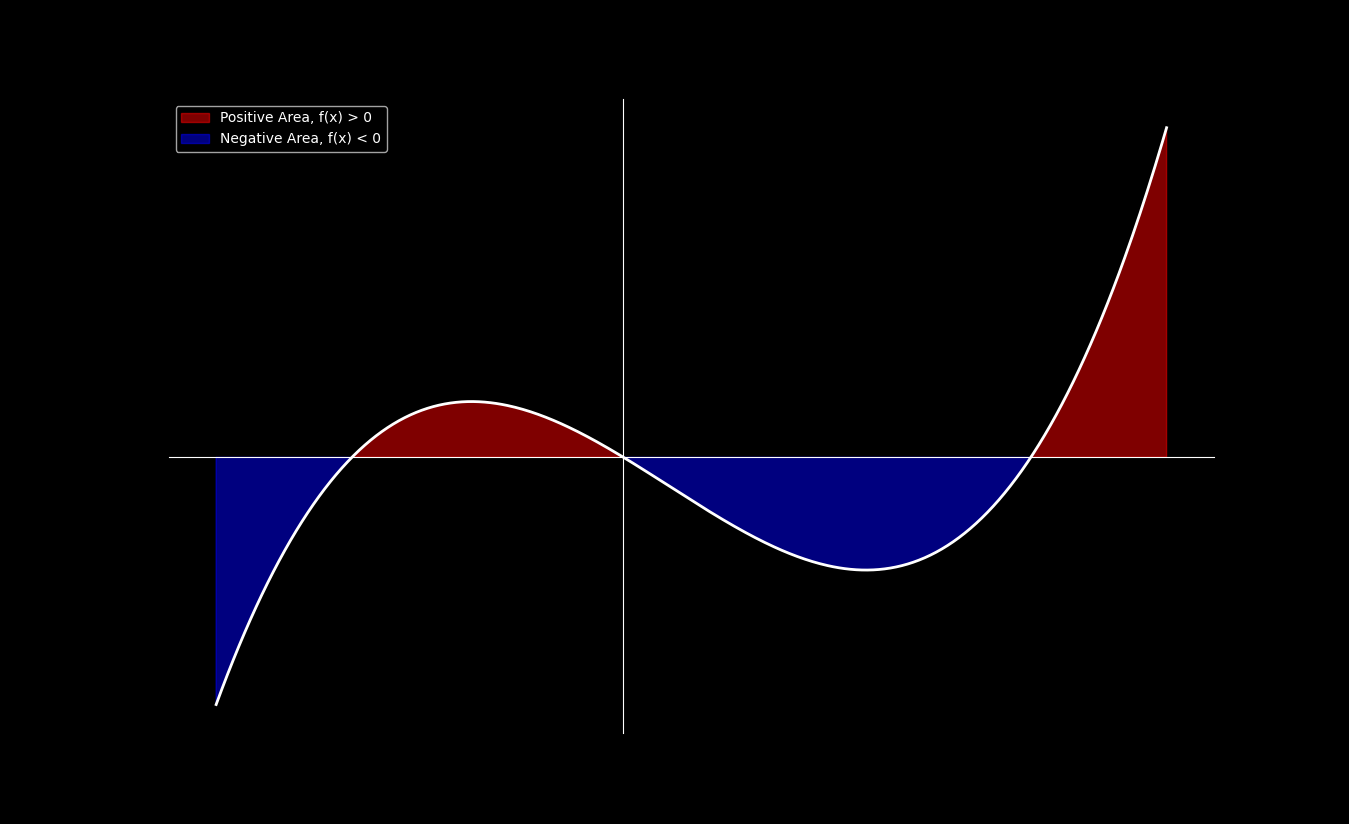Introduction
The notion of integration as the area under a curve or the volume under a surface can be generalized to real-valued functions , provided that we have some notion of assigning a size to the subsets of , i.e. we have a measure on .
This generalization is usually phrased explicitly for real functions , but the exact same terminology is used with real-valued functions . It is thus useful to use real functions as a concrete example to provide motivation for the definitions, while still keeping in mind that the definitions also cover the more general case of real-valued functions as well.
Lebesgue Measure
Definition: Length of an Interval
Let be an interval of .
The length of is an extended real number defined as:
if has one of the forms , , or , where ;
if has one of the forms , , , or , where .
NOTATION
Definition: Generalized Volume of a Cuboid
Let be an open cuboid in the Euclidean space with sides .
The volume of is the product of the lengths of :
NOTATION
Theorem: Lebesgue Outer Measure
The function from the powerset of the Euclidean space to the extended real numbers which is defined for each as the infimum of the total volumes of all sequences of open cuboids which cover , i.e.
is an outer measure on .
PROOF
TODO
Definition: Lebesgue Outer Measure
We call the Lebesgue outer measure on .
Definition: Lebesgue Measure
Let be the Lebesgue outer measure on the Euclidean space and let be the collection of all -measurable sets.
The Lebesgue measure on is the measure generated by Carathéodory’s extension theorem using the Lebesgue outer measure .
Definition: Lebesgue-Measurability
A subset is Lebesgue-measurable if .
The Lebesgue measure is necessary for defining integration for real-valued functions but itself may have nothing to do with or .
Lebesgue Integrals
Consider a subset and its indicator function . The graph of would resemble the following, since if and otherwise:
The area under the graph of is just the sum of the shaded areas, all of which have a height of . The area of each of these is given by , where is the size (length) of each blue piece. Therefore, the area under the graph of is . However, the sum of the sizes of the blue pieces is just equal to the size of . Thus we define the integral of in the following way.
Definition: Lebesgue Integral of Indicator Functions
Let be a measure space, let be measurable and let be the indicator function of .
The (Lebesgue) integral of with respect to is the measure of :
We now extend this definition to functions which can be built from finitely many indicator functions.
Definition: Simple Function
Let be a measure space and let be a real-valued function.
We say that is a simple function if can be represented as the union of a finite collection disjoint measurable sets and there exist real numbers such that
where is the indicator function of .
Consider a simple real function .
The are under its graph is just the sum of the shaded areas. All shaded areas with a blue bottom have a height of and all shaded areas with a green bottom have a height of . Applying the same reasoning as we did with indicator functions, the total shaded area with a blue bottom is . Similarly, the total shaded area with a green bottom is . The area under the graph of is then given by summing these two areas: . More generally, when must be decomposed into subsets , the total area is given by .
Definition: Lebesgue Integral of Simple Functions
Let be a measure space and let be a real-valued function such that can be represented as the union of a finite collection disjoint measurable sets and there exist real numbers with
The (Lebesgue) integral of with respect to is defined using the measures of as
with the convention .
This definition can be extended to non-negative real-valued functions. Consider a real function . We can approximate using a simple function. Choose values from the range of and let . Define in the following way:
We see is a simple function
since gives only when and gives otherwise. Therefore, if and only if . Of course, if we choose only a few values , then will be a pretty bad approximation of . However, as we increase the number of values , becomes a better and better approximation. This is illustrated in the following animation:

Lines with the same color correspond to the same value and is the part of the of which lies directly below the lines corresponding to .
The more closely approximates , the more the area under the graph of resembles the area under the graph of :

This notion of approximating can be defined and proven rigorously via function sequences and their limits but that is unnecessary. Notice that for all . Consider now the set of the integrals of all simple functions such that for all . Since these simple functions are always less than or equal to , the areas under their graphs must be less than or equal to the area under the graph of . The supremum of , i.e. the largest of these areas, is thus as close as one could get to the area under the graph of . Moreover, it can be proven that this is equal to the integral of as becomes a better approximation of .
Definition: Integration of Non-Negative Functions
Let be a measure space and let be a measurable (in the sense of the Lebesgue measure) real-valued function on a measurable subset .
The integral of is the supremum of the set of all integrals of simple functions such that :
Extending the above definition to real-valued functions which can also take on negative values is fairly easy. Consider a real function . Essentially, we split into a negative and a non-negative part. We take the area between the horizontal axis and the graph of ‘s non-negative part of and subtract from it the area between the horizontal axis and the graph of ‘s negative part. This gives us a notion of the signed area between the horizontal axis and the graph of and thus yields a good definition for the integral of .

Definition: Integration of General Functions
Let be a measure space, let be a measurable (in the sense of the Lebesgue measure) real-valued function on a measurable subset and let and .
The (Lebesgue) integral of with respect to is defined using the integrals of and as
provided that at least one of or is finite (in order to avoid ).
We say that is -integrable if its integral is finite.
Definition: Integrating on a Subset
Let be a measurable subset .
The (Lebesgue) integral of over with respect to is the integral
where is the indicator function of .
We say that is -integrable on if its integral on is finite.
Note: Lebesgue Integral with Respect to the Lebesgue Measure
When is (or ) and is the Lebesgue measure on (or ), then we just say “Lebesgue integral” and omit “with respect to”. Similarly, we just say that is “Lebesgue-integrable”.
Theorem: Integrability Criterion
Let be a measure space, let be a measurable (in the sense of the Lebesgue measure) real-valued function on a measurable subset and let be a measurable subset .
The function is -integrable on if and only if the integral of its absolute value is -integrable on :
PROOF
TODO